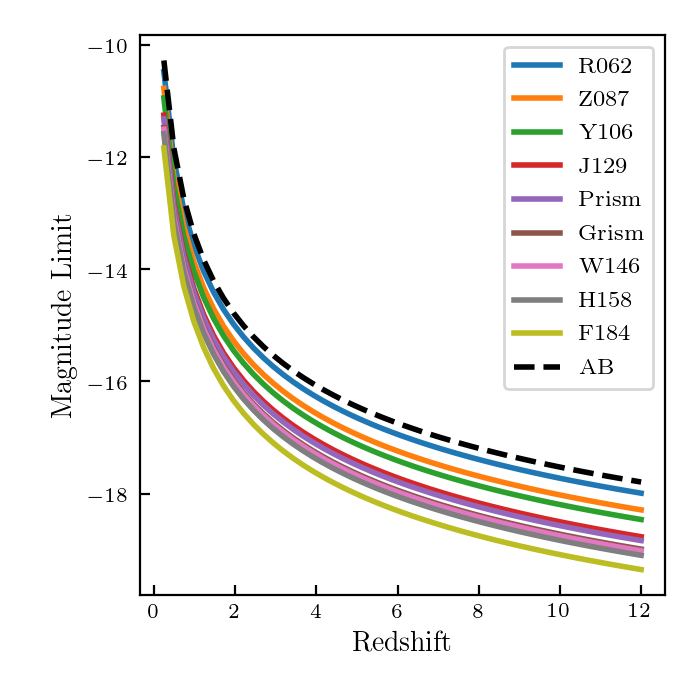Nicole Drakos
Research Blog
Welcome to my Research Blog.
This is mostly meant to document what I am working on for myself, and to communicate with my colleagues. It is likely filled with errors!
This project is maintained by ndrakos
Limiting Magnitudes
Here I am calculating the limiting magnitude in each band in Roman Telescope for a potential Ultra Deep Field Survey.
Limiting magnitude
I found this link useful in describing magnitude systems.
The AB magnitude limit of a potential UDF is \(m_{AB} \sim 30\), which corresponds to \(f_{\nu} = 3.631 \times 10^{-9} \rm{Jy}\). Therefore, the limiting magnitude of each
\(m_{i} = -2.5 \log_{10} \dfrac{3.631 \times 10^{-9} \rm{Jy}}{Q_i}\),
where \(Q_i\) is the zero point of each filter.
This site has a summary of WFIRST filters and their zero points.
Therefore, here is the limiting magnitude in each of these bands, assuming the AB magnitude limit is \(m_{AB} \sim 30\).
| Filter | \(ZP_{\nu}\) (Jy) | Limiting Magnitude |
|---|---|---|
| R062 | 3022.34 | 29.80 |
| Z087 | 2298.31 | 29.50 |
| Y106 | 1962.64 | 29.33 |
| J129 | 1479.84 | 29.03 |
| Prism | 1388.79 | 28.96 |
| Grism | 1207.17 | 28.80 |
| W146 | 1174.09 | 28.77 |
| H158 | 1090.69 | 28.69 |
| F184 | 863.33 | 28.44 |
As a function of redshift
Converting this to an absolute magnitude, as a function of distance, we can see the magnitude we will be able to detect in each filter.
\(M = m- 5 \log_{10}(D_L(z)/(\sqrt{1+z} 10 {\rm pc}))\). Here I have an extra factor of (1+z) to account for the fact that the object has been redshifted, which I didn’t include in this post.. I’m really not sure this is correct… Does this assume the spectrum of the object is flat?
Here is the plot I get for magnitude limits in each filter:
